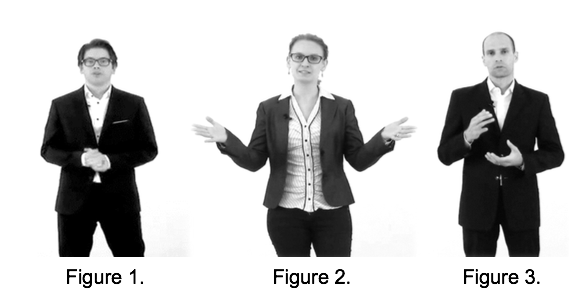Creating Charisma
Sandra Pauser, PhD, Udo Wagner, PhD, and Claus Ebster, PhD
Selling success often depends on an agent’s ability to create favorable impressions; thus, the ability to manage client perceptions is of great importance. The literature almost unanimously stresses the importance of charisma as a prominent determinate for success within various disciplines, including sales.
 Charisma stems from the Greek word charismata, which means “gift of grace,” implying that charisma is inborn characteristic. In modern thought, however, charisma is considered learnable. Charismatic individuals can convey messages in a convincing manner to charm their followers. Applying this concept to a personal selling context, we define charisma as the articulation of communication messages that enhance a salesperson’s appeal.
Charisma stems from the Greek word charismata, which means “gift of grace,” implying that charisma is inborn characteristic. In modern thought, however, charisma is considered learnable. Charismatic individuals can convey messages in a convincing manner to charm their followers. Applying this concept to a personal selling context, we define charisma as the articulation of communication messages that enhance a salesperson’s appeal.
Our research identifies specific, learnable, and culturally appropriate displays of charismatic behavior as a means of enhancing client impressions and ultimately increasing sales.
About our Study
Previous research in other social science disciplines has identified enhanced body movements as a driver of charisma. The results of our study extend previous findings, identifying specific nonverbal cues to use during the selling process. We measured and examined specific nonverbal behaviors which increase perceived charisma, an important driver of salesperson effectiveness, and thus buyers’ attitude toward the salesperson.
In the first of our two studies, salespeople from two different cultures pitched their respective products or services in a one-minute standardized setting. The individuals’ nonverbal behaviors, including body action and posture, were objectively coded using a time-locked coding scheme. In the second study, participants evaluated the videotaped sales presentations assessing the salesperson’s charisma and indicating their attitudes toward them. We then analyzed the coded body actions and postures and participant’s evaluation of the salesperson’s charisma, as well as attitudes towards them.
Our Findings
Consistent with previous findings in personal selling and service marketing, we show that nonverbal communication matters in a personal selling context. Nonverbal messages enhance a salesperson’s charismatic appeal, which in turn, leads to favorable attitudes towards the salesperson. Beyond that, our findings suggest that symmetrical and non-symmetrical arm actions and postures, depending on culture, have significant effects on charismatic appearance.
We expand prior literature by providing evidence that charisma is culture-specific in the sense that symmetrical or asymmetrical gesturing yields contrary outcomes. While charisma is a universal phenomenon, the results of this cultural comparison indicate that nonverbal behaviors that predict charisma in a sales conversation are of particular importance to international sales representatives.  Within low-gesture cultures, such as the United States or Central Europe, an emphasis should be placed on symmetrical arm postures, actions and functions (see Figure 11 and Figure 21). In contrast, asymmetrical movements should be emphasized in high-gesture cultures, such as Israel (see Figure 31).
Within low-gesture cultures, such as the United States or Central Europe, an emphasis should be placed on symmetrical arm postures, actions and functions (see Figure 11 and Figure 21). In contrast, asymmetrical movements should be emphasized in high-gesture cultures, such as Israel (see Figure 31).
Please note, sales professionals located in high-gesture countries should exercise caution when applying the findings of previous studies on nonverbal charismatic behaviors, as many prior studies have neglected to consider cultural context.
Managerial Implications
Our findings show that specific, learnable displays of charismatic behaviors can be used as a means of enhancing client impressions. Considering that nonverbal communication messages are often encoded or decoded unconsciously, our research provides managers with guidelines on ways for enhancing awareness of nonverbal communication messages by strategically making use of symmetrical and asymmetrical nonverbal behaviors to enhance favorable client impressions. As with all learned behavior, practice makes perfect. The first step to incorporating charismatic behavior into your sales is to begin practicing.
Within your agency, encourage and train your sales force to use symmetric or asymmetric communication tactics, depending on cultural setting. Find low-stake situations in which to practice, such as sales training sessions. Take time out of your day to try out some role play sale pitches with a colleague. Practice on your own by recording yourself then reviewing and critiquing your pitch. Embrace feedback as you hone your movements.
As noted above, agencies within low-gesture cultures, such as the United States or Central Europe, should put emphasis on symmetrical arm postures, actions and functions. In high-gesture cultures, asymmetrical movements should be emphasized. Take the time to research the culture in which you are working to properly align your symmetrical and asymmetrical movements with your geographic location.
Conclusions
As you begin incorporating symmetrical and non-symmetrical gestures into your repertoire of sales routines, the attitude of your clients will be positively impacted. Positive attitudes among clients will ultimately result in more effective sales.
US firms spend on average $1,252 annually on an employee’s training and learning expenditures. Researchers and managers clearly understand that effective selling requires the salesperson’s ability to manage favorable impressions. Do not underestimate small changes of posture and movement that you can implement in order to improve customer perception at zero cost.
. . . . . . . . . . . . . . . . . . .
Recommended Reading
Pauser, Sandra, Udo Wagner, and Claus Ebster (2018), “An Investigation of Salespeople’s Nonverbal Behaviors and Their Effect on Charismatic Appearance and Favorable Consumer Responses,” Journal of Personal Selling & Sales Management, 38(3), 344-369.
. . . . . . . . . . . . . . . . . . .
Reference
- Pauser, Sandra, Udo Wagner, and Claus Ebster (2018), “An Investigation of Salespeople’s Nonverbal Behaviors and Their Effect on Charismatic Appearance and Favorable Consumer Responses,” Journal of Personal Selling & Sales Management, 38(3), 344-369.
. . . . . . . . . . . . . . . . . . .
About the Authors
Sandra Pauser, PhD
Faculty of Business, Economics, and Statistics, University of Vienna, Chair of Marketing
Dr. Sandra Pauser (PhD – University of Vienna) wrote her doctoral dissertation in the area of personal selling, which was honored with the scientific award (EHI retail institute) and won the premier award at the KSMS doctoral dissertation competition. Besides focusing on personal selling and sales management, her research, published in international journals, concentrates on consumer behavior and advertising.
Udo Wagner, PhD
Faculty of Business, Economics, and Statistics, Chair of Marketing, University of Vienna
Dr. Udo Wagner’s (PhD – Technical University Vienna) is full professor of Marketing. His research achievements are reflected in more than 250 publications concentrating on marketing with an emphasis on marketing research, retailing and models of consumer behavior. Professor Wagner has published in renowned international journals such as the Journal of Marketing Research, Marketing Science, International Journal of Research in Marketing, European Journal of Operational Research, and OR Spectrum.
Claus Ebster, PhD
Faculty of Business, Economics, and Statistics, Chair of Marketing, University of Vienna
In addition to his teaching role, Dr. Claus Ebster (PhD – University of Vienna) is the president of Market Mentor, a consulting company specializing in marketing strategy, consumer research and store design. As a researcher, Claus has focused on studies related to store design, environmental psychology, merchandising and sales techniques, which he has published in international academic marketing journals.